On Jan. 10, America’s first
large-scale “clean coal” power station was declared operational, and IBEW members
from Houston Local 66 are playing an integral part in making the groundbreaking
technology work.
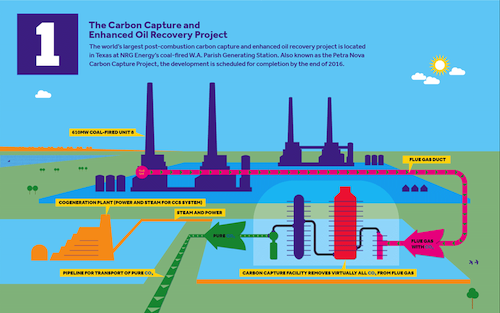
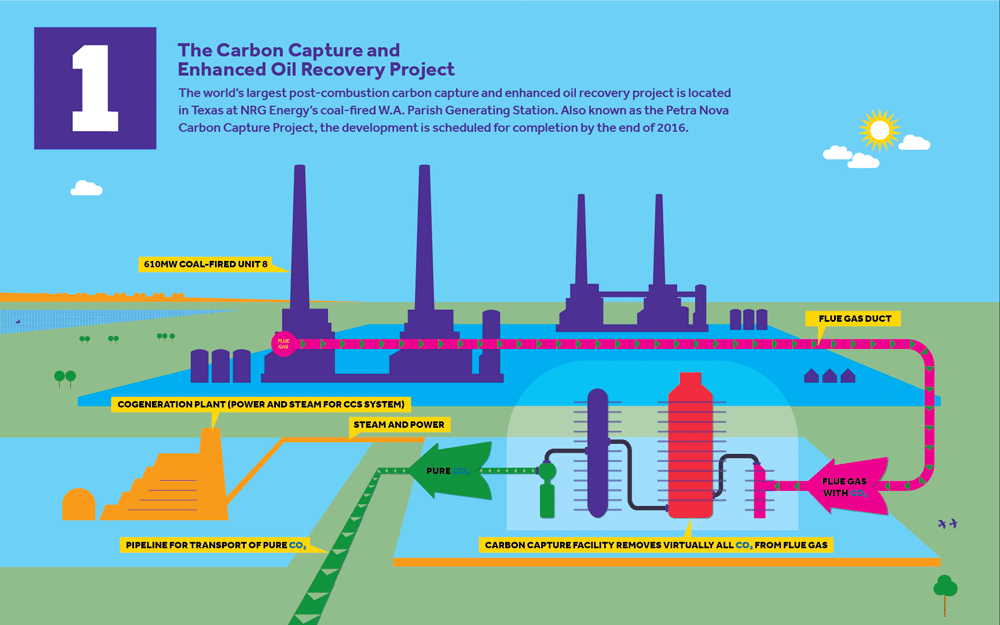
|

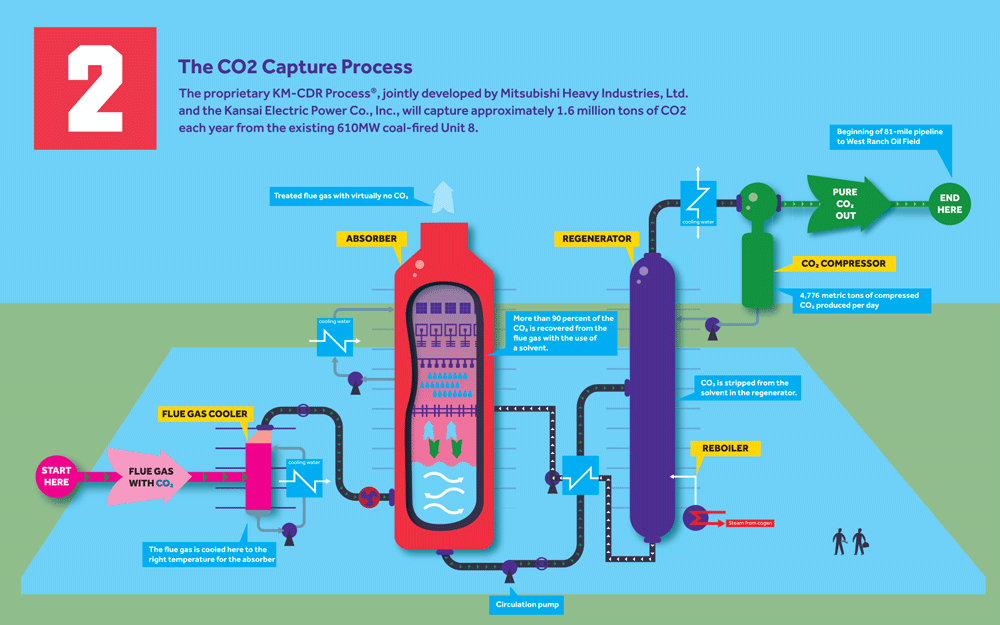
|
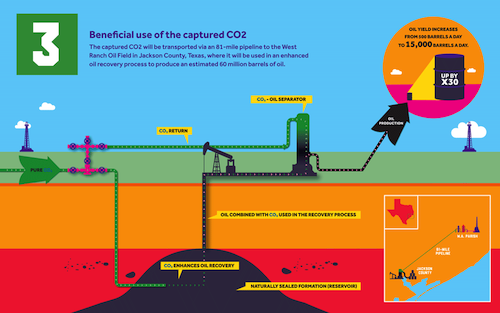
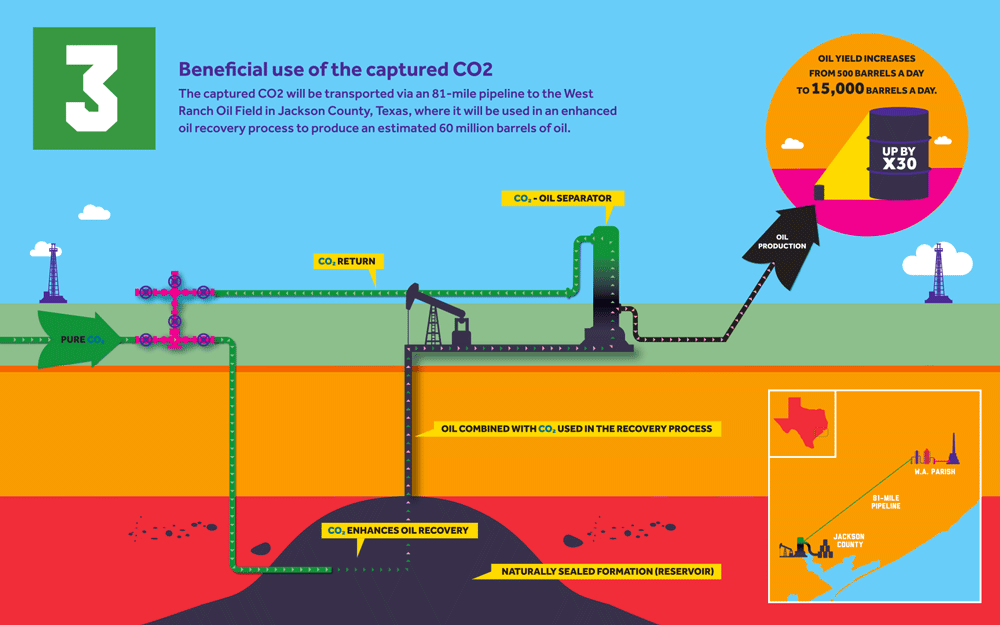
|
| Slides show how Petra Nova's CCS technology captures CO2 from flue gas, filters and liquifies it, then pipes the CO2 to a nearby oil field where it is used to boost production. Afterwards, the gas is trapped underground where it does no harm to the environment.
|
The billion dollar Petra Nova project, located at NRG Energy’s W.A. Parish power plant in southeast Texas is the first of its kind to recapture a coal plant’s emissions and extract harmful carbon dioxide from it for commercial use in the U.S. The retrofit to one of the plant’s four existing coal units aims to strip 90 percent of the CO2 from a portion of the unit’s flue gases, capturing 5,000 tons of carbon per day, or more than 1.6 million tons of the greenhouse gas each year.
“We’re really pleased that this project shows carbon capture can work at scale,” said Utility Department Director Jim Hunter, who described Petra Nova as a “proof of concept” as much as anything. “This is the first time anyone has been able to retrofit a coal unit at this scale and to do it in a way that has some economic viability, so we’re hopeful that the technology and lessons learned here will allow for more investment in coal in the future.”
For Houston Local 66 Business Manager Greg Lucero, the Petra Nova project has been on his radar for at least five years. “The whole idea was to see what we could do to keep coal power around,” he said. Under pressure from environmental regulation and changes in public opinion for decades, insiders say the coal industry needs to find a way to clean up its carbon footprint if it’s going to survive long-term. “Petra Nova proves we can do that,” Lucero said.
Although the project captures emissions from just 240 megawatts of the W.A. Parish plant’s more than 3,500 megawatt output, it still qualifies as the largest carbon capture system fitted to a coal plant in the world.
“I’m proud of this system,” Lucero said. “Anything we can do to extend the life of coal and get our members in on the ground floor of a new clean technology like this is great as far as I’m concerned.” The system and its small gas-fueled generator have also added 15 to 20 bargaining unit jobs to the nearly 200 already at W.A. Parish, mostly for Local 66 members who were in danger of being laid off at one of NRG’s nearby coal plants.
Of course, the real question determining the future of carbon capture and sequestration, or CCS, technology is whether there’s a profit to be made that justifies the expense.
“The short answer,” Hunter says, “is ‘Not right now.’”
In Petra Nova’s case, about $190 million of the total $1 billion cost came from the U.S. government, part of the Department of Energy’s Clean Coal Power Initiative. Tax credits for carbon capture also helped to pad the bottom line. But for NRG and its partner in the project, JX Nippon Oil & Gas Exploration Corp., the real money comes from a unique plan the two companies have to make the captured CO2 work for them.
Just 80 miles to the southwest, the West Ranch oil field has been in operation since 1938, having produced 390 million barrels of crude in its lifetime. But, as with all oil fields, they eventually stop producing on their own, leaving millions of barrels of oil in the ground and billions of potential profit there with it.
That’s where the CO2 comes in. Through a process called “CO2 enhanced oil recovery”, the West Ranch field is piping liquid carbon dioxide captured by the Petra Nova system and pumping it into wells, where it mixes with leftover oil and allows crews to extract more of what’s left in the ground. As an added bonus, much of the CO2 is then “sequestered” underground in the oil’s place, where it hardens over time, doing none of the environmental damage it would have done if released into the atmosphere. Working in a testing phase since last September, Petra Nova had already captured and pumped 100,000 tons of liquid CO2 to West Ranch by the first of the year.
The process has been used since the early 1970s, but it has never been coupled with carbon capture from a coal plant. In oil production, the initial recovery phase often leaves 80 to 90 percent of oil trapped in place once standard pumping has been completed. That leads to a secondary phase, where water is pumped into the ground, “repressurizing” the wells to allow more oil to be extracted. Even after this effort, as much as 50 to 70 percent of the oil is still out of reach, partially due to the fact that oil and water don’t mix.
The third phase, using captured liquid CO2, allows oil producers to give new life to depleted oil fields. NRG hopes production at West Ranch will skyrocket from about 300 barrels a day to as much as 15,000 using Petra Nova’s captured gas.
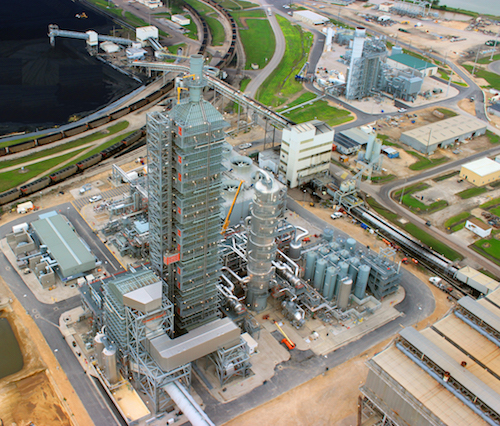
|
| An aerial view of the Petra Nova system, which is attached to Unit 8 at NRG Energy's W.A. Parish power station southwest of Houston. The system is the largest of its kind in the world to be fitted to a coal plant, and it will provide scientists and engineers with information that could lead to wider adoption of its carbon capture technology in the future.
|
“At $50 [per barrel of oil], we’re economically viable, which means that it can pay all the debt, it can pay for the capital cost, it can pay for the operating cost, and it actually makes a bit of money to pay for this,” NRG spokesman David Knox told E&E News.
But is it enough? Hunter isn’t so sure – yet. “When they started planning this project,” he said, “oil was up at $100 per barrel or more. There was a near-universal assumption that the government was going to put a price on carbon emissions. When you combined that with an existing tax credit for capturing CO2, it made a lot of sense. But with oil at $50 per barrel, I don’t think you’ll see many more companies trying this near-term.”
NRG has admitted as much. “At $100 [per barrel], this project would make an incredible amount of money,” Knox said. With prices what they are at present, however, the company has no plans to build a second CCS system.
Still, Hunter and Lucero say Petra Nova provides hope for the future of carbon capture, particularly since traditional opponents of coal power like the Natural Resources Defense Council are supportive. “Even at just 240 megawatts, this is still CO2 that would be spewing into the atmosphere,” Hunter said. “This system is grabbing that, using it to produce a valuable commodity, and then sequestering the carbon underground where it doesn’t damage the environment.”
“That makes lots of people happy, plus it’s putting IBEW members to work. If they can figure out the economics, we could be looking at the future of coal power, and at even more IBEW jobs installing and running these kinds of systems all over the U.S. and Canada.”
Photo Credit: All photos courtesy of NRG Energy.